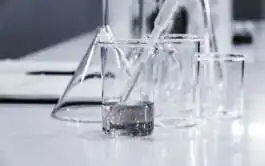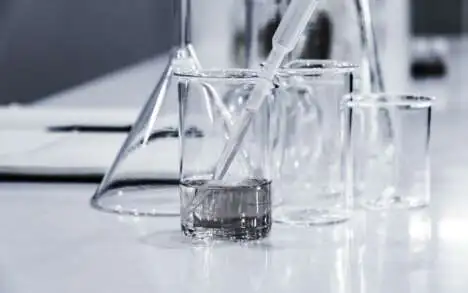By Martina Hayes, manager of medical devices and IVD
What is PMS?
Post market surveillance (PMS) has increasingly come under the spotlight for medical device manufacturers, particularly in the EU since the introduction of the EU Medical Device Regulation and the EU In Vitro Diagnostic Medical Devices Regulation.
The World Health Organization’s definition of post market surveillance is “a set of activities conducted by manufacturers, to collect and evaluate experience gained from medical devices that have been placed on the market, and to identify the need to take any action [i]”. The definition of post market surveillance can vary from one jurisdiction to another, however, the intent and means of carrying out the activities can be quite similar.
Who is involved in PMS?
Since there are many activities involved in PMS, it follows that there may also be many parties involved:
- Sales Representatives may receive feedback from users, for example during the use of a device in an operating theatre.
- Consultants may help a company set up their PMS system or notify the regulatory authorities, on the company’s behalf, if an issue has occurred in the field.
- Distributors may be involved in performing recalls or feeding back information they have learned.
- A company may even outsource part or all of its post-market surveillance processes to a third party, via a quality agreement.
However, regardless of who is involved, or who is playing what role within the PMS process, ultimately it is the manufacturer that is responsible for implementing and maintaining the effectiveness of post market surveillance processes.
Why do PMS?
PMS is both a regulatory requirement and a valuable source of information, therefore, it is important to understand both why it must be done and also in what ways it benefits the manufacturer to carry it out.
There are three main drivers for why PMS must be done, these include Quality Management System requirements, product risk management, and the requirements of clinical evidence/evaluations.
Requirements for post-market surveillance are spelt out in the quality management system requirements of MDSAP, ISO 13485 and 21CFR 820, together with specific jurisdictional regulations. While there may be some nuanced differences between each of these requirements, the general concepts and requirements are largely the same. Looking specifically at ISO 13485:2016, the standard states that the manufacturer “shall identify and implement any changes necessary to ensure and maintain the continued suitability, adequacy and effectiveness of the quality management system, as well as medical device safety and performance through the use of …. post-market surveillance…[ii]”. PMS is, therefore, used to identify and inform changes that may need to occur within the QMS. The standard also states that “feedback processes shall include provisions to gather data from production as well as post-production activities.ii”
The risk management standard for medical devices, ISO 14971:2019, states that “the manufacturer shall establish, document and maintain a system to actively collect and review information relevant to the medical device in production and post-production phases.” [iii] Thus, PMS is required as part of risk management activities to ensure that the risk documentation remains current throughout the lifecycle of the device. For example, as part of the design and development process a manufacturer may estimate the probability of certain risks associated with the use of a medical device. However, once the device has been released to the market and is in clinical use, there may be additional data that necessitates update to the probability, or another detail of the risk analysis, to reflect the real-life data.
Another reason to perform PMS is due to the requirement for clinical evaluation This is an area of increased focus and scrutiny of many of the global regulators, and while specific requirements for clinical evaluation can differ between jurisdictions, the requirement for post-market data is a common feature. As an example, the TGA Clinical Evidence Guidelines for Medical Devices states that “clinical evidence should be updated and systematically reviewed periodically as new information based on post-market surveillance activities and product experience becomes available. [iv]”
Similar to the risk management process, this PMS data can inform clinical evidence report updates, ensuring that compliance with regulatory requirements is maintained.
Finally, depending on the country or jurisdiction a manufacturer is selling their product into, they must also meet the specific requirements for PMS for that jurisdiction.
Why PMS makes business sense
Aside from the previously mentioned requirements there are also many reasons why a company would want to do post-market surveillance.
- Firstly, manufacturers conduct PMS to understand the actual performance of the device on the market. Regardless of how rigorous the testing conducted on a device is, it is impossible to know how the device will perform in every situation until it is put into use in the field.
- PMS also helps manufacturers to ensure patient safety. For example, if PMS shows a common occurrence, this can help the manufacturer to redesign the device to improve the safety, or to identify the need to remove the device from the market. Similarly, from a satisfaction point of view, the manufacturer can use feedback to improve the product. For example, if a surgeon finds the packaging of an implant difficult to open, the company can take that feedback to improve the design and thus improve customer satisfaction.
- Finally, PMS is simply good business practice and can help to protect the company’s reputation. It is impossible to foresee every risk before a product goes out onto the field, but by identifying an issue early on, issues can quickly be dealt with.
Proactive and reactive approaches to PMS
There are many activities that can be set up within your QMS to gather data for use in post-market surveillance. Broadly, these are categorised as proactive and reactive approaches.
- Proactive processes are set up to seek out information in order to detect potential adverse events before they occur. An example is customer surveys to assess whether the user is happy with the device or has any other information on their experience with the device which may be useful for the manufacturer to know.
- Reactive processes are set up to react to situations that have already occurred. For example, a complaint system where the customer channels back information in relation to issues that they have encountered. Once a complaint is received, the manufacturer needs to assess it for reportability based on the reporting criteria of the jurisdiction in which the product is sold.
Some methods of obtaining data in the field, as mentioned, include surveys and complaints. However, there are many other methods of gaining information on your device’s performance on the field, such as trending and reviews. As an example, the manufacturer might trend various data that is relevant to the organisation, such as complaints data, adverse events data, surveys, maintenance data, installation data, and sales data. Each department would trend the data relevant to them and identify if there is anything that was previously not identified. Reviews include literature reviews, database reviews, registry reviews, etc. The aim of completing reviews is to search and identify product related data to see if it is relevant to the manufacturer.
Whether due to a requirement or for commercial purposes, the objective of PMS is to ensure a product on the market is safe and effective. For the manufacturer, good PMS processes not only safeguard patients, but ensure customer satisfaction and builds trust in the organisation.
[i] Guidance for post-market surveillance and market surveillance of medical devices, including in vitro diagnostics, https://www.who.int/publications/i/item/9789240015319
[ii] ISO 13485:2016(en) Medical devices — Quality management systems — Requirements for regulatory purposes https://www.iso.org/obp/ui#iso:std:iso:13485:ed-3:v1:en
[iii] ISO 14971:2019 Medical devices — Application of risk management to medical devices
https://www.iso.org/standard/72704.html
[iv] TGA Clinical evidence guidelines for medical devices https://www.tga.gov.au/sites/default/files/clinical-evidence-guidelines-medical-devices.pdf








